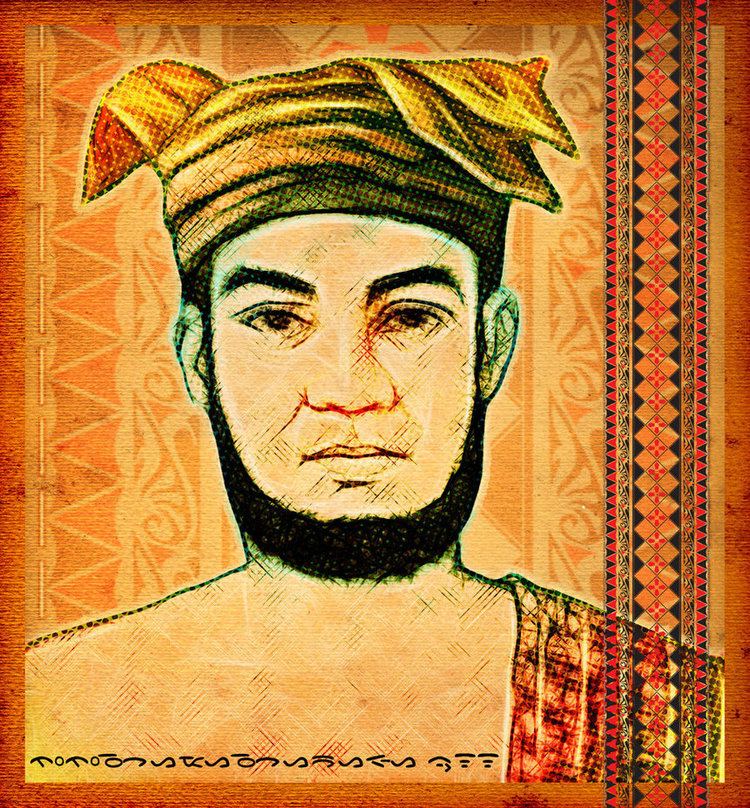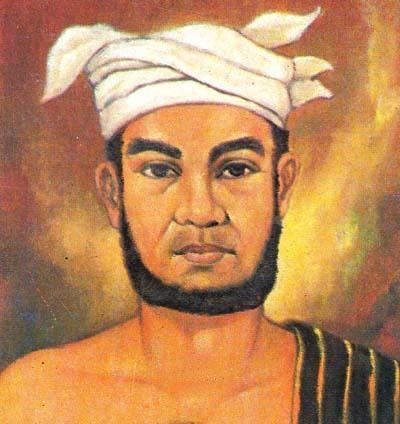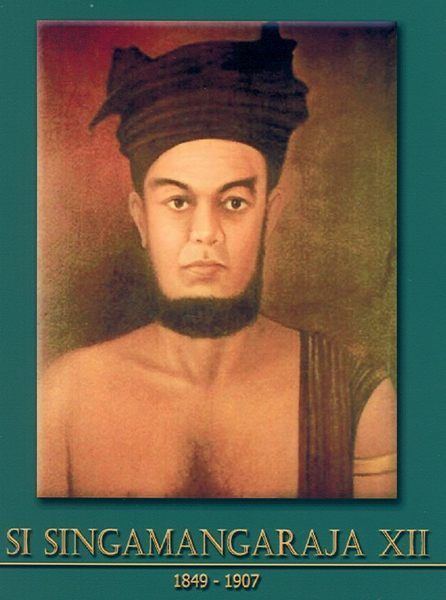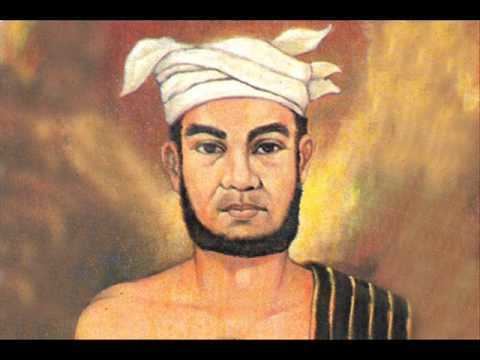Name Sisingamangaraja XII | ||
 | ||
Died June 17, 1907, Dairi Regency Children Lopian, Patuan Nagari, Patuan Anggi Parents Boru Situmorang, Sisingamangaraja XI | ||
Opera batak detik detik wafatnya raja sisingamangaraja xii
Patuan Besar Ompu Pulo Batu, better known as Sisingamangaraja XII (1849 – 17 June 1907), was the last priest-king of the Batak peoples of north Sumatra. In the course of fighting a lengthy guerrilla war against the Dutch colonisation of Sumatra from 1878 onwards, he was killed in a skirmish with Dutch troops in 1907. He was declared a National Hero of Indonesia in 1961 for his resistance to Dutch colonialism.
Contents
- Opera batak detik detik wafatnya raja sisingamangaraja xii
- Opera batak pahlawan nasional raja sisingamangaraja xii
- Biography
- Resistance against the Dutch
- Legacy
- References

Opera batak pahlawan nasional raja sisingamangaraja xii
Biography

Sisingamangaraja XII was born Patuan Besar Ompu Pulo Batu in Bakkara, Tapanuli, in 1849. He was the successor to his father Sisingamangaraja ("great-king-kind-of-lion") XI, who died in 1867.

He was the last in a line of figures known as parmalim (religious leaders) who were regarded as divine kings and incarnations of Batara Guru, the Javanese version of the god Shiva. The Sisingamangaraja was believed to have powers such as the ability drive away evil spirits, call forth the rain and control rice-growing. He was not normally seen as a political figure, but when Dutch colonists and missionaries began penetrating north Sumatra from the 1850s onwards both Sisingamangaraja XI and XII became the focus of Batak resistance to colonial rule. Although they were not personally anti-Christian, the two Sisingamangarajas faced pressure to act from traditional list Batak chiefs and the neighbouring Sultanate of Aceh, which was at war with the Dutch from 1873.
Resistance against the Dutch

In February 1878, Sisingamangaraja XII held a religious ceremony to rally the Bataks behind him in a war of resistance against the Dutch. His forces attacked Dutch outposts in Bakal Batu, Tarutung, but were defeated. He regrouped and launched a fresh offensive in 1883–84 with Acehnese aid, attacking the Dutch at Uluan and Balige in May 1883 and in Tangga Batu in 1884. The Dutch mounted a harsh response, torturing and killing Bataks suspected of being followers of Sisingamangaraja XII, as well as burning houses and imposing punitive taxes. They offered rewards for information on his whereabouts but were unable to capture him.
In 1904, Dutch forces under Lt Col Gotfried Coenraad Ernst van Daalen attacked Tanah Gayo and some areas around Lake Toba in order to break the Batak resistance. Sisingamangaraja XII's forces resorted to guerrilla warfare and evaded the Dutch troops. The Dutch reinforced their troops and weapons before launching another offensive in 1907 against the remainder of Sisingamangaraja XII's forces in the Toba region. A battle was fought at Pak-pak between the Dutch, led by Captain Hans Christoffel, and Sisingamangaraja's troops. On 17 June 1907 Sisingamangaraja XII was killed in a clash at Dairi along with his daughter Lopian and his sons, Patuan Nagari and Patuan Anggi.
He was buried in Tarutung, then moved to Balige, and later moved to Samosir Island.
Legacy
In 1961 Sisingamangaraja XII was declared a "National Hero of Indonesia" – specifically a "Hero of the Struggle for Freedom" (Pahlawan Perjuangan Kemerdekaan) – by the Indonesian government under Presidential Decree number 590.
